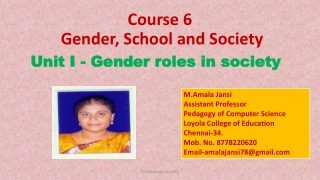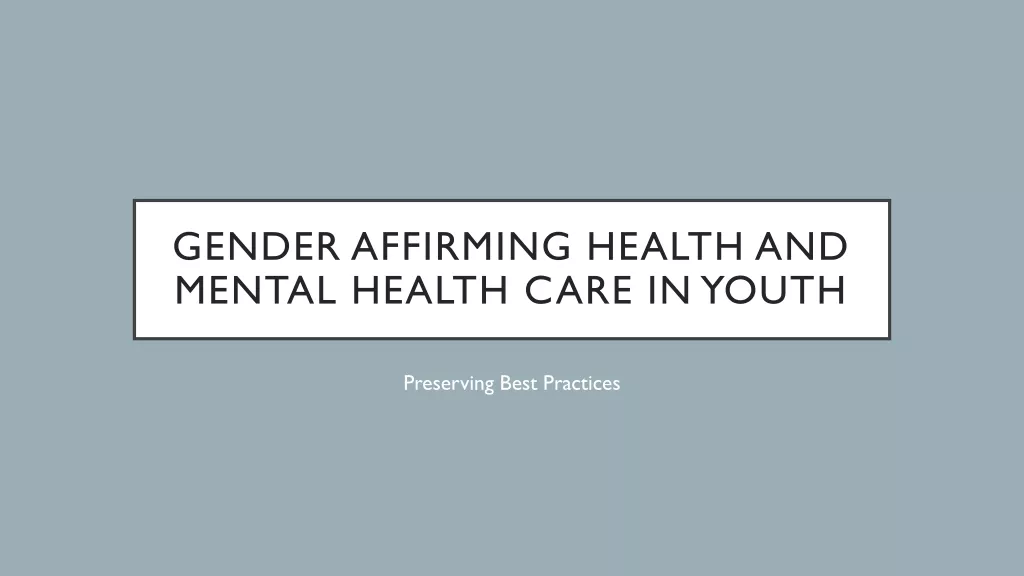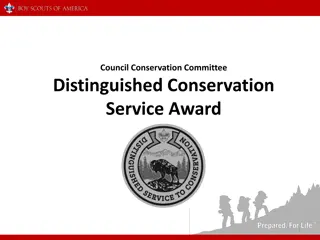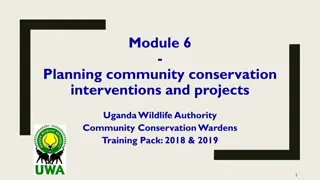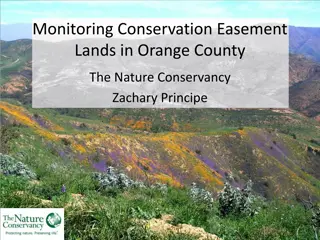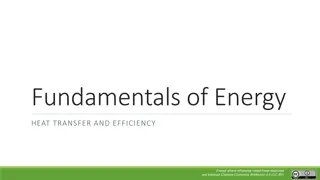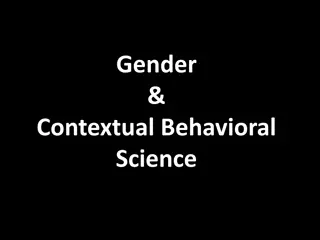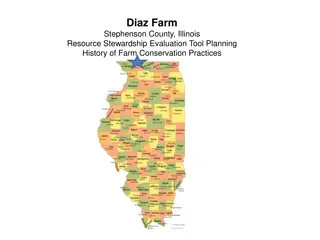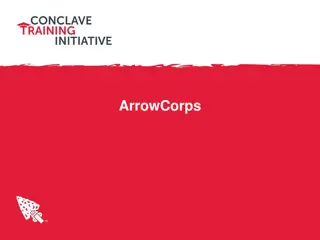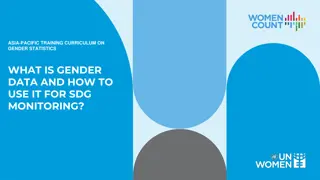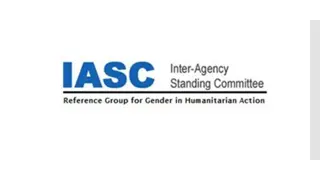Exploring Gender Dynamics in Community Conservation
This research delves into the intricate relationship between gender and conservation efforts, emphasizing the impact of gender roles on biodiversity loss. It discusses gender essentialism, global gender perspectives in conservation, and presents case studies on Payment for Ecological Services (PES) in Rwanda. By examining the unequal impacts on men and women regarding environmental degradation, it prompts a critical discussion on creating conservation practices that address gender disparities.
Download Presentation

Please find below an Image/Link to download the presentation.
The content on the website is provided AS IS for your information and personal use only. It may not be sold, licensed, or shared on other websites without obtaining consent from the author. Download presentation by click this link. If you encounter any issues during the download, it is possible that the publisher has removed the file from their server.
E N D
Presentation Transcript
The Gender Dimensions of Community Conservation LAINE MUNIR (PHD, NEW YORK UNIVERSITY) RESEARCH FELLOW Center of Excellence in Biodiversity and Natural Resource Management (CoEB) February 8, 2020
CONTENTS I. What do we mean by gender ? II. Main ideas about gender and the environment III. Gender essentialism? IV. What we know globally about gender and conservation V. Women as subjects in conservation VI. Women as agents in conservation VII. Case study: PES in Rwanda VIII. Case study: PES in Rwanda questions 1
I. What do we mean by gender? The difference in the socially constructed labor roles between men and women. In Africa, colonization altered the customary gender division of labor. Men were encouraged to produce cash crops for export whereas women were forced to grow food crops for the family and local consumption. This led to biodiversity loss in many African countries even hundreds of years go. These gender divisions in labor still exist today and continue to contribute to biodiversity loss. How do we either: A) change gender relationships to the environment, or B) create conservation that accommodates gender-based relationships with the environment? 2
II. Gender and the Environment Three main ideas today: 1. Men and women need equal rights . 2. Men and women need equal outcomes . 3. Men and women need equal rights and equal outcomes that acknowledge how their differences are constructed . Example: Payment for Ecological Services (PES) = compensation ($) to local communities for conservation that displaces them Which of these do you think is best? 3
III. Gender essentialism? African Wildlife Foundation (AWF) says: 1. African women are the natural custodians of the environment. 2. They pay the price when it comes to the social and economic effects of factors associated with environment and conservation. 3. Women are more directly affected by the degradation of the environment. 4. Much of the livelihood of African women relies upon the stability of the environment around them and its decline has impacted women disproportionally to men. Which of these statements do you agree with? What are advantages and disadvantages to thinking about gender and conservation in this way? 4
IV. Gender and Conservation WHAT WE KNOW GLOBALLY THAT APPLIES TO AFRICA: 1. Men and women place different degrees of importance on different categories of ES within conservation areas. 2. Women use land daily and men less often, e.g. once per week. 3. Women may need communal lands more: less access to private land for resources* less access to cash economy, paid employment, and markets 4. Men and women engage in environmental violations of conservation spaces for different reasons. 5
V. Women as subjects in conservation Ways that women are victims of environmental degradation and thus impacted by (lack of) conservation: Water Wild foods Fodder Pollination disruption Traditional medicine Landslides Fires What are additional concerns about Rwandan women and conservation? 6
VI. Women as agents in conservation Examples of female-led conservation: Northern Kenya s Sera Conservancy installed its first female Corporal Ranger to lead a gender-mixed field team Black Mamba majority-female anti-poaching group in South Africa, Akashinga all-female anti-poaching group in Zimbabwe Eco-activist and Nobel Peace Prize winner Wangari Maathai, who led the fight against deforestation in Kenya, continues to inspire tree-planting What are examples of women s agency in Rwandan conservation? 7
VII. Case Study: PES in Rwanda Rising theme: Gender-sensitive conservation and compensation (PES) WHAT WE KNOW ABOUT COMPENSATION GLOBALLY THAT APPLIES TO AFRICA: 1. Various needs for trees and plants are gender-dependent. 2. When it comes to land and environmental resources, there is gender-based inequality in: community decision-making fair distribution of cash equality of rules enforcement information flow channels 8
VIII. Case Study: PES in Rwanda Questions 1) How does gendered division of labor in Rwanda impact environmental knowledge, and is that knowledge taken into account during assessment? 2) Are gender-based differences in environmental needs accounted for during the compensation process? 3) Does compensation that comes in the form of cash appropriately benefit women, in contrast to compensation in kind? 4) Can women engage in vocational training as a form of compensation with equity to men? POLICY: How can women be more equitably integrated into PES? 9
THANK YOU Laine Munir LPS247@nyu.edu 0780-232-081 10



